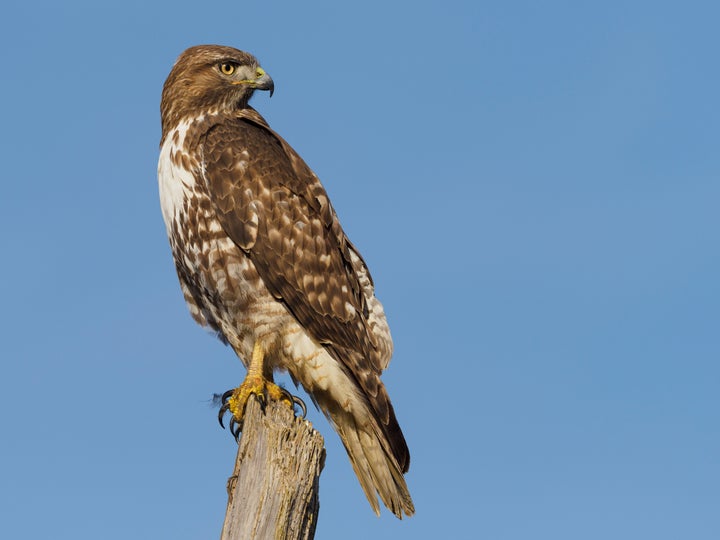Many hoped that Tuffy, a red-tailed hawk bird-napped by an eagle mother, would remain a member of the family.
The story of an eagle family and hawk that many hoped would be an inspiring tale of interspecies bonding has taken a tragic turn.
Tuffy, a female red-tailed hawk sharing a nest with an eagle family in California’s Santa Clara County, is dead.
In late May, bird photographer Doug Gillard captured an image of a mother bald eagle carrying a small hawklet in her talons ― presumably to feed to her offspring.
About a week later. Gillard shared an optimistic update on Facebook. Rather than becoming lunch, the bird-napped chick seemed to have become a tentative member of the family, with the mother feeding her new hawk charge.
The newly formed interspecies family soon began making headlines.
“This kind of raptor ‘adoption’ is a rare but known phenomenon,” Katie LaBarbera, science director for the San Francisco Bird Observatory, told the San Francisco Chronicle last month.
But experts, including LaBarbera, doubted how well things would go. She feared that when the hawk became a fledgling ― old enough to start learning to fly but still dependent on parents for food ― the eagle mom would grow suspicious.
She turned out to be exactly right. The mother bird began acting somewhat aggressively towards Tuffy as the hawk grew. Eventually, the mother started violently preventing her from returning to the nest, making it difficult for Tuffy to get the food she needed.
Some followers of the saga clamored for a rescue, but such a mission posed practical problems. A park ranger in the area where the nest is located told Gillard that human interference too close to the nest could cause the bald eagles ― a federally protected species ― to abandon the nest site.
“There is no legal path, and questionable moral justification, for interfering with the eagles and depriving them of prey they had caught,” Craig Nikitas of Bay Area Raptor Rescue told the Canadian Broadcasting Corporation.
However, once it was clear Tuffy was kicked out of the nest for good, Nikitas could obtain the legal authorization to capture her. He and Gillard and a local park ranger attempted a rescue mission but could not trap the bird in time. Her emaciated body was ultimately found on the ground.

Raptor biologist David Bird told The Los Angeles Times that it’s extremely common for birds of prey to die as fledglings.
“More than half of young raptors don’t make it through their first year of life,” he said. “There’s so many things that could kill them: They could starve to death, they can get nailed by a predator, they could fly into a freight train, get caught up in wildfire, smoke, all kinds of things can happen.”
But most fledglings hadn’t captured the public’s imagination like Tuffy.
“I made every effort I could to help the hawk once authorization was granted to try to trap it,” Nikitas told the CBC. “With all my heart, I wish it had been a success.”
Credit: Source link